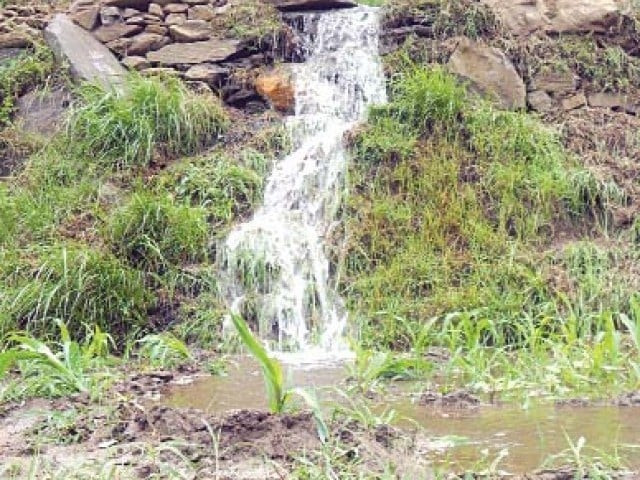Irsa to use WAA-Tool to ensure fair water distribution
New software is in line with objectives of National Water Policy

The Water Accord Apportionment Tool (WAA-Tool) was formally handed over to the Indus River System Authority (IRSA) during a virtual meeting in Islamabad on Tuesday, which would be used for an equitable water distribution among the provinces.
WAA-Tool is a software developed through a joint collaboration among the Water Resources Ministry (MoWR), Irsa, Water and Development Authority (Wapda), provincial irrigation departments and the Australian government through the Commonwealth Scientific and Industrial Research Organisation (CSIRO), over a period of two year.
The handover ceremony was attended by Irsa chairman, members and technical personnel, representatives of Wapda, irrigation departments, Australian High Commission in Islamabad and the CSIRO.
Speaking on the occasion, Irsa Chairman Rao Irshad Ali Khan and other members appreciated the development of the WAA-Tool and thanked the Australian government and the CSIRO for providing financial and technical resources to prepare it.
The IRSA chairman requested the Australian government and the CSIRO to further enhance the Tool to accommodate the mid-season review process. The representatives of the provincial irrigation departments and Wapda also expressed similar views.
Officials from the Australian High Commission and the CSIRO thanked the Pakistani stakeholders for their complete help and facilitation during the development process.
Since 1991, water resources in the Indus river system have been shared among provinces according to the Water Apportionment Accord (WAA) 1991. The accord describes only broad water-sharing principles but not the precise mechanism for the seasonal planning process.
The development of the WAA-Tool is in line with the objectives of “National Water Policy (NWP)”, which demands upgradation of water sector information systems for improved asset management and evidence- and data-driven decision-making.
The NWP also calls for improving the national information base by developing a national planning database to support an integrated information system in order to enable the planning and development of water and other related resources on a sustainable basis.
The WAA-Tool provides the capability for exploring alternate system operational rules and the ability to quantify impacts of different interpretations. It could also explore the impacts of different inflow forecasts, reduced storages and climate change on provincial sharing.
The WAA-Tool captures 10-day allocation processes. The process is agreed among the stakeholders and encoded in the WAA-Tool. The tool has been successfully tested and used for the Kharif 2020 and the Rabi 2020-21 seasons.
It forecasts rim-station inflows and performs system operation by running the reservoirs on set rules, routing the flows in the river network with accompanying losses/gains, allocating shares to the provinces on different sharing options and releasing excess water downstream Kotri, if available.
It follows the same statistical and analytical techniques as manually adopted by Irsa. Hence it saves a lot of time by calculating alternative system operation in a matter of seconds. With fast computing, the WAA-Tool has the capacity to calculate and present with different system operation scenarios.
The WAA-Tool adopts a modern web-style interface. While the first release is designed to run on desktop computers, it can be enhanced to run on a central server or in cloud. Results are stored in a database management system that guarantees its integrity, ie, data cannot be changed once stored.



















COMMENTS
Comments are moderated and generally will be posted if they are on-topic and not abusive.
For more information, please see our Comments FAQ